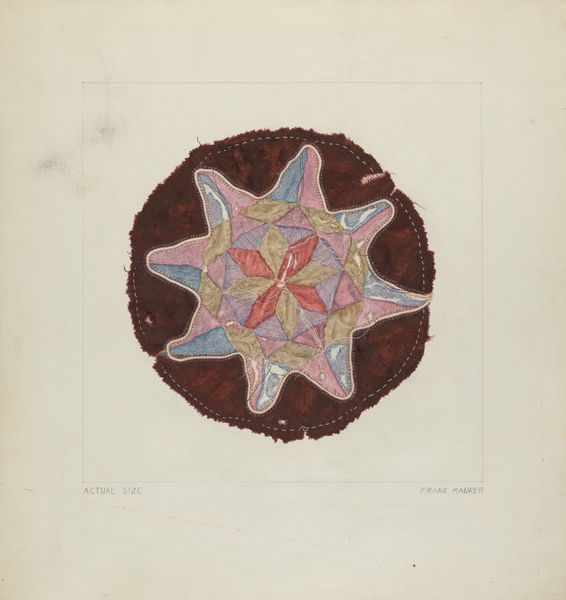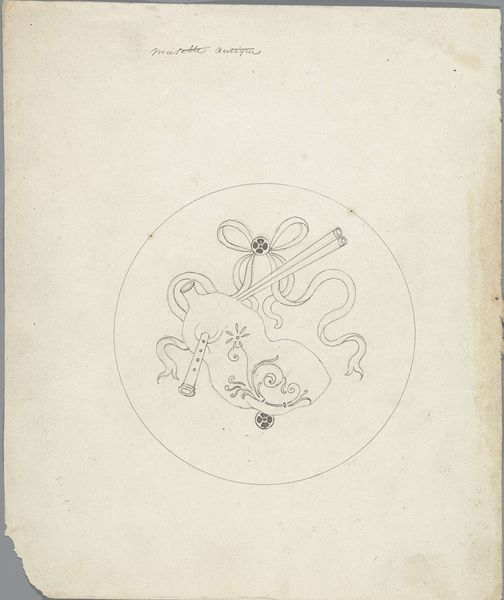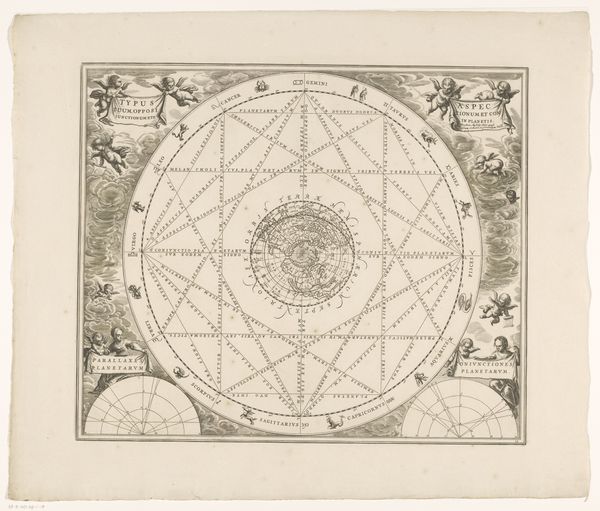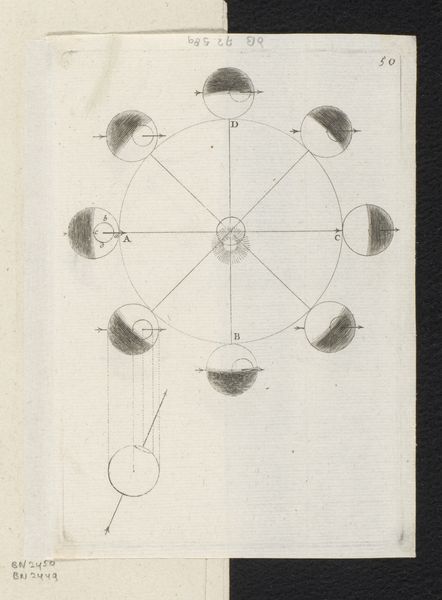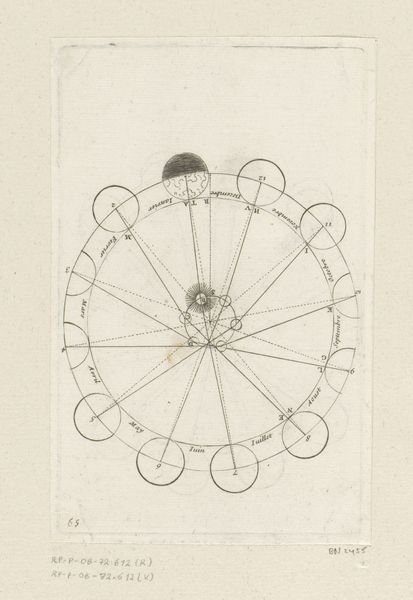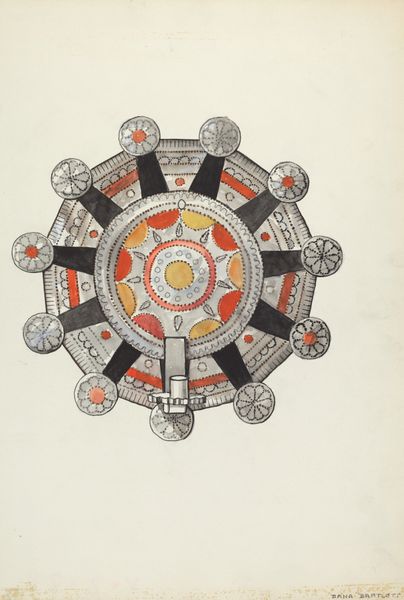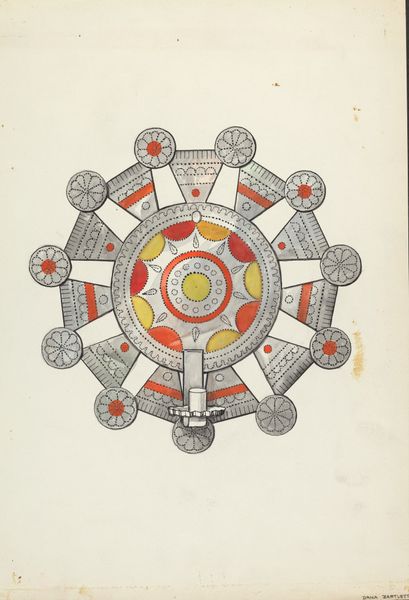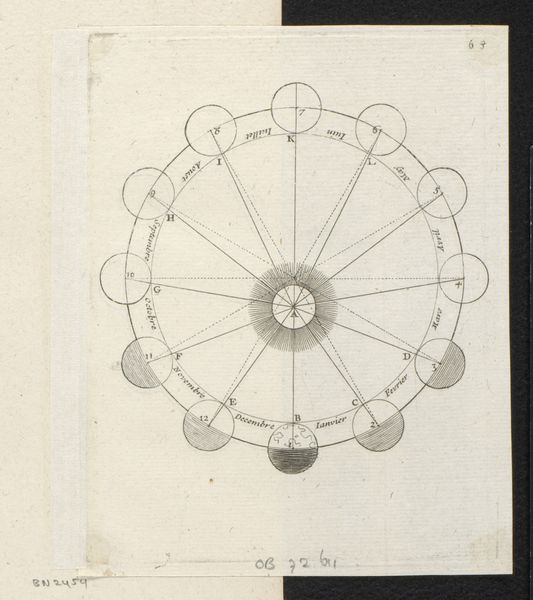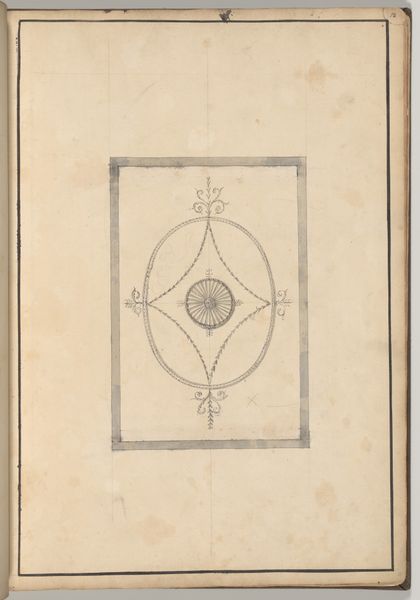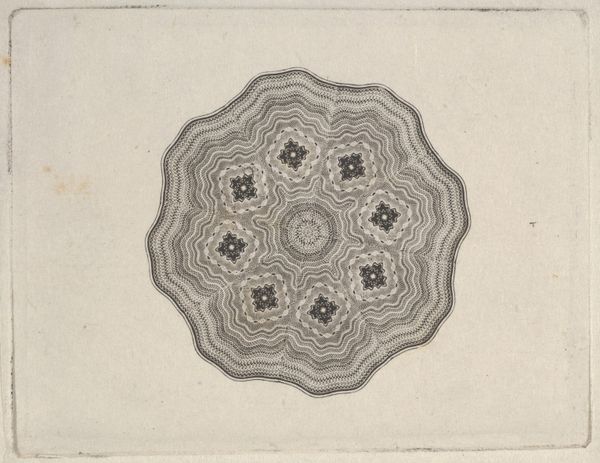
drawing, paper, ink
#
drawing
#
pen sketch
#
old engraving style
#
vase
#
paper
#
personal sketchbook
#
ink
#
ink drawing experimentation
#
geometric
#
pen-ink sketch
#
ink colored
#
pen work
#
sketchbook drawing
#
storyboard and sketchbook work
#
decorative-art
#
sketchbook art
Dimensions: height 200 mm, width 163 mm
Copyright: Rijks Museum: Open Domain
Editor: This ink drawing on paper, "Seventeenth-Century Plate from Kütahya," attributed to Theo Nieuwenhuis, presents a sketch of what seems to be a decorative plate. The starkness of the ink creates a rather simple impression, but the intricacy of the patterns is quite fascinating. What do you make of it? Curator: Indeed. Notice how the artist employs simple geometric shapes and floral motifs. Each element isn't merely decorative; it's a symbol. Consider the central star, for instance. Does it remind you of other star symbols you may have seen? Editor: Perhaps it reminds me of something celestial, or some kind of guiding star? Curator: Precisely! And think of Kütahya. It was known for its ceramics. This design would be very meaningful for this artisan’s world. Are the flowers familiar to you in that context? The tulips or carnations perhaps relate to trade routes and exchange of cultures? How are the flowers portrayed here; does that stylistic choice mean anything? Editor: The shapes are familiar. The choice to outline them so boldly makes me think of traditional Ottoman designs with the bold, simplified linework. It’s like he is creating the blueprints to build from? Curator: I see exactly what you mean, and he creates that bold imagery so well. These weren't just designs; they were a language spoken through symbols and objects. What would you take away from our exploration today? Editor: I am inspired to understand how a seemingly simple sketch can reveal deeper cultural and historical narratives that convey artistic styles. Curator: Exactly, we learn a lot when we explore artwork this way!
Comments
No comments
Be the first to comment and join the conversation on the ultimate creative platform.

